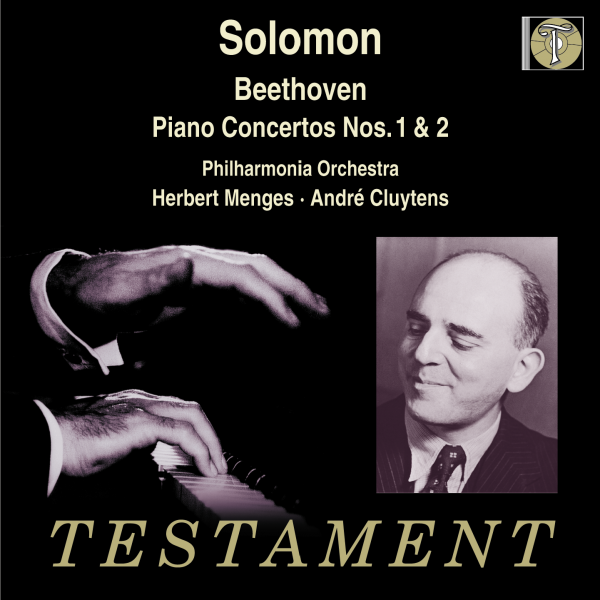Logowanie
Mikołaj - ten to ma gest!
Elton John, The Mamas & The Papas, Cat Stevens, Rod Stewart, Bobbie Gentry, Stevie Wonder, Engelbert Humperdinck
Memory Lane
Edycja Numerowana - 1000 egzemplarzy w skali światowej
RACHMANINOV, Eiji Oue, Minnesota Orchestra
Symphonic Dances / Vocalise
Best Recordings of 2001!!! NAJCZĘŚCIEJ KUPOWANA PŁYTA Z RR!
Karnawał czas zacząć!
Music of Love - Hi-Fi Latin Rhythms
Samba : Music of Celebration
AUDIOPHILE 24BIT RECORDING AND MASTERING
CHOPIN, LISZT, DEBUSSY, DVORAK, Gerhard Oppitz
Dances romantiques - A fantastic Notturno
Wzorcowa jakość audiofilska z Clearaudio
Winylowy niezbędnik
ClearAudio
Double Matrix Professional - Sonic
najbardziej inteligentna i skuteczna pralka do płyt winylowych wszelkiego typu - całkowicie automatyczna
BEETHOVEN, Solomon, Philharmonia Orchestra, Herbert Menges, Andre Cluytens
Piano Concertos 1 & 2
Salomon Cutner, brytyjski pianista, który już w wieku dziesięciu lat miał za sobą pierwsze publiczne występy. Jako nastolatek z powodzeniem wykonywał kompozycje Beethovena, oraz Czajkowskiego. Koncertował w Wielkiej Brytanii, USA i Australli, gdzie zasłynął z legendarnych interpretacji Beethovena. Jego gra charakteryzuje się niezwykłą wirtuozerią, liryzmem, oraz głęboką pasją. The greatest pianist Britain has ever produced and one of the greatest Beethoven interpreters of the last century was Solomon (1902-1988)--he never used his patronymic, Cutner--whose career was tragically cut short by several massive strokes in 1956. He only began to achieve genuine international fame in the early 1950s--and both of his two great Beethoven cycles began in 1952. He never completed the sonata cycle (the 18 sonatas he managed to complete have been reissued by Testament), but fate was more forgiving about the concertos--two of which were actually completed after the first of Solomon's strokes, when the pianist was partially paralyzed. This release, which pairs Concertos Nos. 1 and 2 (like the Testament CD that combines Nos. 3 and 4), couples a concerto recorded before the stroke with one made afterward. Both are among the finest ever recorded. And this from a man who confided to his wife when the sessions for the First Concerto were completed that "I don't think I'll ever be able to play the piano again." The performance observes the music's classical syntax and form, while never failing to supply the bite and tension straining against them and separating Beethoven from Mozart and Haydn. Menges, one of Solomon's favorite collaborators, matches his soloist without a misstep. The pianist's 1952 collaboration in the Concerto No. 2 with the young Andre Cluytens is no less beautiful. The first movement is reckless, but unfailingly accurate in its daring; the second warmly intimate; and the third filled with bravura that conjures a world of grace, wit, and elegance. (Stephen Wigler) “Here on three CDs are Solomon's legendary 1952-6 recordings of the Beethoven piano concertos and two Mozart piano sonatas, a felicitous coupling. Time and again Beethoven's exuberant, unpredictable nature is qualified by playing of a supreme poise and equanimity that omits so little of his essential character. It's also one of Solomon's cardinal qualities that he makes it impertinent to single out this or that detail, offering instead a seamless argument as supple and natural as it's understated. Solomon makes the slow movements the expressive centres of each concerto, and here his ability to sustain an Adagio or Largo is without equal. This is notably true of the first two concertos, where such writing becomes music to soothe the savage breast rather than awake more immediate emotions. In the outer movements his superfine technique and musicianship make light of every difficulty, and at 6'55" in the Second Concerto, after an impatient if very Beethovenian entry, he re-creates a magical sense of stillness and repose. In the Third Concerto the Largo is impeccably controlled and so, too, is the central Andante con moto from the Fourth Concerto. Solomon's momentary lack of control in the first movement at 9'37" is, perhaps, an indication of problems caused by Cluytens' less than vital or stimulating partnership. And yet the finale could hardly be more vivace, with all the clarity and grace for which Solomon was celebrated. In the Emperor Concerto Solomon somehow bridges the gap between the Fourth and Fifth Concertos. His immaculate ease and buoyancy in the double-note descent just before the first movement's conclusion, his limpid and serene traversal of the central Adagio are pure Solomon, and his finale is among the least opaque on record. Surprises include the shorter cadenza in the First Concerto, Clara Schumann's cadenza in the Third (enterprising if less distinguished than Beethoven's own magnificent offering) and a few teasing elaborations in the two cadenzas from the Fourth. The recordings come up well (though the sound in the Fifth needs some opening out; it lacks ring and brilliance), and the Mozart sonatas are a delectable bonus. Listening to Solomon's peerless pianism and musicianship, the critic discards pen and paper and listens in awe, wonder and affection.” (The Gramphone Classic Music Guide, 2010)





























